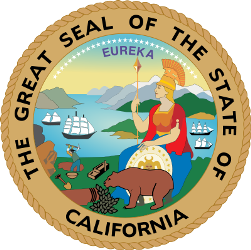34th CD Race Sets Record for Number of California US House Special Election Candidates
The race to fill Xavier Becerra’s seat has five more candidates on the ballot than the previous high in California set during 2006’s 50th CD contest

The nonpartisan blanket electoral system, passed via Proposition 14 in 2010, is now utilized in the state for all federal legislative and partisan statewide and legislative offices.
Prior to its passage, special elections for federal U.S. House contests in California transformed from a single election (with multiple candidates from the same party and plurality winners permitted), to a closed primary, to a blanket primary, to the current nonpartisan blanket primary.
A total of 23 candidates were on Tuesday’s 34th CD primary ballot: 19 Democrats, one Republican, one Green, one Libertarian, and one independent. [A 20th Democrat, Michelle Walker, qualified to have write-in votes count, but is not on the ballot].
California has hosted nearly four-dozen U.S. House special elections in the primary era. Prior to Tuesday’s race, the largest number of candidates to appear on the ballot in a Golden State U.S. House special election was 18 – a mark set in 2006’s 50th CD race to fill the vacancy caused by Republican Duke Cunningham’s resignation in December of the previous year.
In that special primary, 14 Republicans, two Democrats, one Libertarian, and one independent appeared on the ballot.
Democrat Francine Busby and Republican Brian Bilbray placed first and second respectively and moved on to the June runoff with Bilbray winning the seat.
Note: Bilbray’s victory was just the second time a candidate for California U.S. Representative who did not have the most votes in a special election primary went on to win the runoff. This also occurred in 1979’s 11th CD special after the killing of Democrat Leo Ryan in Jonestown, Guyana. Democrat Joel Holsinger (24.3 percent) edged GOPer Bill Royer (22.8 percent) in the primary but Royer was victorious in the runoff.
Other California U.S. House special elections over the decades with an unusually large number of candidates on the ballot include:
- 2005, 48th CD: 17 candidates (won by Republican John Campbell)
- 2007, 37th CD: 17 candidates (Democrat Laura Richardson)
- 1969, 11th CD: 16 candidates (Republican Pete McClosky)
- 2001, 32nd CD: 16 candidates (Democrat Diane Watson)
- 2011, 36th CD: 16 candidates (Democrat Janice Hahn)
- 1987, 14th CD: 14 candidates (Democrat Nancy Pelosi)
- 2009, 10th CD: 14 candidates (Democrat John Garamendi)
- 1975, 37th CD: 13 candidates (Republican Shirley Pettis)
Overall, just six U.S. House special elections in the Golden State had 10 or more candidates on the ballot from statehood through 1998.
Since 1999, 11 of the 12 special elections have seen at least 10 candidates run with the lone exception being 2008’s 12th CD race won by Democrat Jackie Speier with five candidates.
Among the 159 regular primaries that have been held across the state’s 53 CDs since Proposition 14 became law, only five have seen at least 10 candidates appear on the ballot:
- 2012, 2nd CD: 12 (open seat won by Democrat Jared Huffman)
- 2012, 8th CD: 13 (open seat won by Republican Paul Cook)
- 2012, 52nd CD: 10 (won by Democrat Scott Peters)
- 2014, 33rd CD: 18 (open seat won by Democrat Ted Lieu)
- 2016, 44th CD: 10 (open seat won by Democrat Nanette Diaz Barragan)
Since the nonpartisan blanket primary went into effect, a total of 685 candidates have appeared on the ballot in California U.S. House primaries: 320 Democrats, 273 Republicans, and 92 independents and third party candidates.
Follow Smart Politics on Twitter.

1. Hm, so State Assembly (and Senate) elections ARE NOT conducted under the “nonpartisan blanket primary” method?
2. When Pelosi was initially elected (with the blessing of departing Representative Sala Burton) her constituency was designated as the FIFTH, just as Pete McCloskey’s constituency was numbered the 11th (he served from December of 1967 until early January of 1983; along the way, he defeated Miss “Good Ship Lolipop” in his first electoral test, conducted an arguably quixotic anti-Vietnam War campaign for POTUS against Nixon in ’72, and waged a competitive but losing bid for US Senate in ’82; his own consituency, while remaining intact, was given 3 different numbers during his House tenure, 11, 17, and 12).
3. Perhaps this report ought to have been held off until the identities of runoff contenders were known for sure, no?